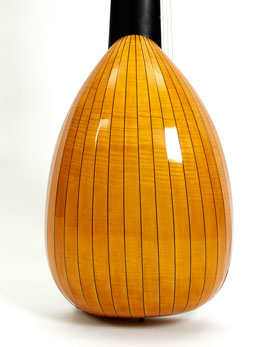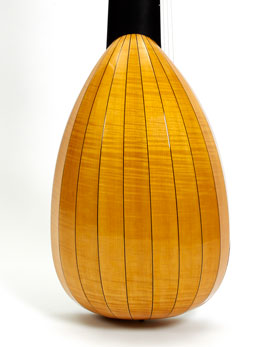Current models
Two distinct shapes of lute body – which is the right one for me?
Within historical lute building there can be determined two ideally distinct body shapes, both of which have been retained in the building of our instruments. They differ basically in the relation between depth and breadth of the lute body. Differing proportions between these parameters can be justifiably seen to involve different worlds of sound; already around 1600 Alessandro Piccinini described these as “melodic” and “harmonic”.
Instruments with narrow and deep bodies will sound rather sweet and cantabile. Those with broad, shallower forms will sound more brilliant and strong, lending themselves to the harmony and use in ensembles. Both worlds have thoroughly their own charms.
|
|
This same distinction in sound, resulting from particular specifications of construction, can be observed in violins (Amati & Stradivari), harpsichords (French & Italian) and modern grand piano (Blüthner & Steinway). The musicians of past centuries did not find that the existence of these distinct ideals gave reasons for any fundamental decision but did their best to participate in both areas. Professional string players of the 18th century, for example, often owned a narrow, arched model of the Amati type for use in chamber music and a poweful instrument of a broader, shallower structure for larger settings.
The decision for one or the other body shape depends on performance situation, the style of the music to be presented and the individual personality of the player.




 broad body
broad body narrow body
narrow body